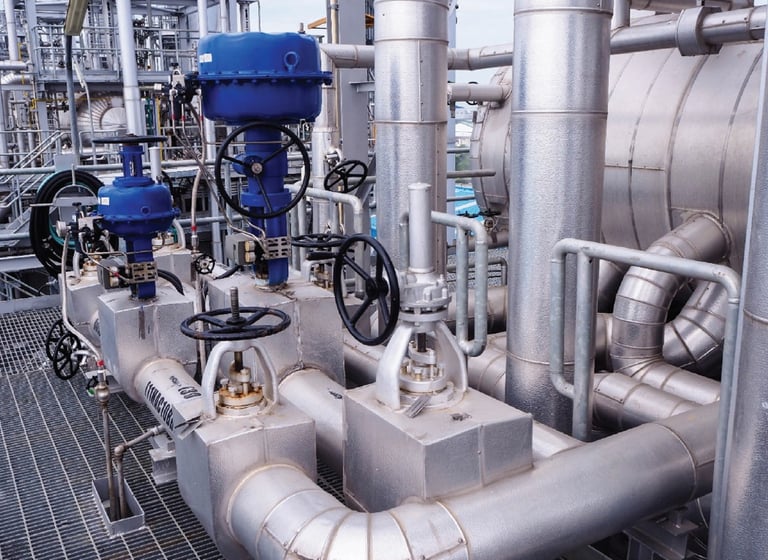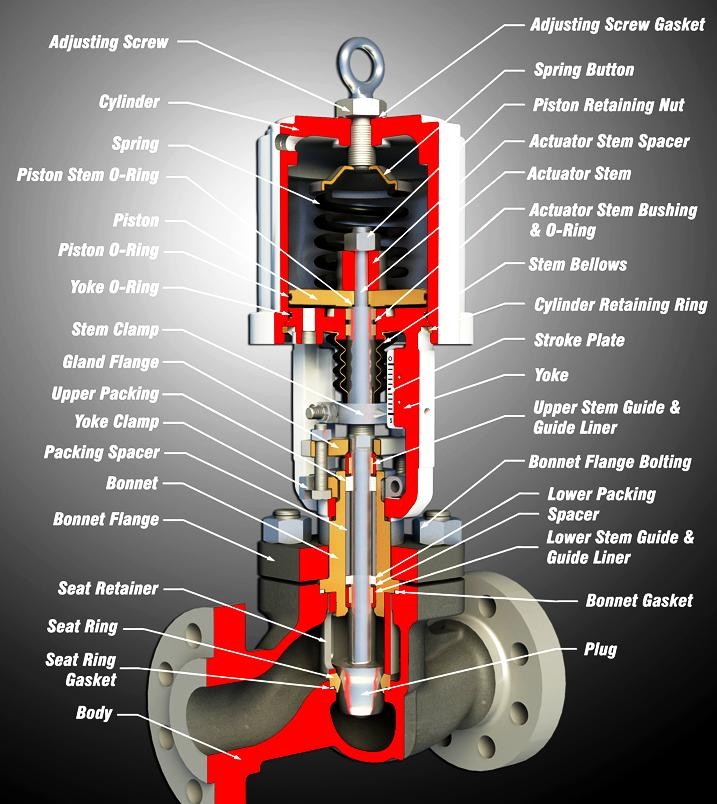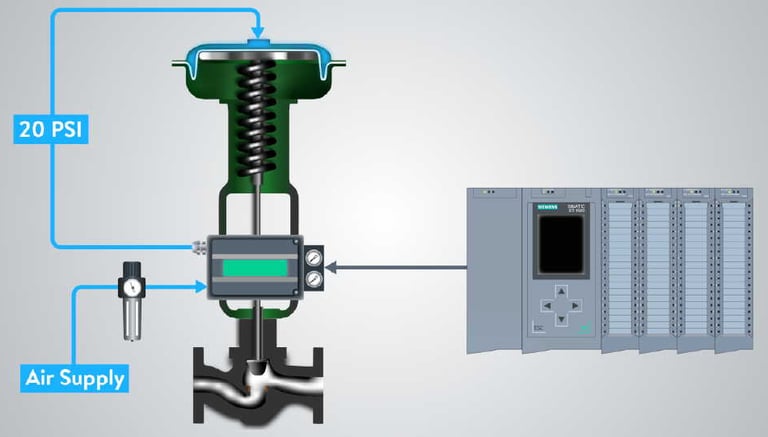WHAT IS A CONTROL VALVE—AND HOW DOES IT WORK?
Discover what a control valve is, how it works, and why it plays a vital role in process automation.


INTRODUCTION
A control valve is a critical component in industrial automation—referred to as the "final control element"—used to regulate fluid flow, pressure, temperature, or liquid level. By varying the opening of a valve in response to signals from a controller, the control valve ensures precise process management.
ANATOMY OF A CONTROL VALVE
Every control valve features several key components:
Valve Body & Trim: Houses the flow path and internal trim (plug/disc and seat). These parts directly interact with process fluids.
Bonnet & Packing: The bonnet protects internal components and guides the stem; packing prevents leakage around the moving stem.
Actuator: Converts the controller’s signal into mechanical movement—available in pneumatic, electric, or hydraulic forms.
Positioner: Acts as a local regulator, ensuring the valve reaches the precise commanded position. Available in pneumatic, analog, or digital (“smart”) versions.
HOW CONTROL VALVES FUNCTION—A STEP-BY-STEP OVERVIEW
Process Measurement: A sensor measures the process variable (e.g., pressure or temperature) and sends data to the controller.
Controller Calculation: The controller compares the measured value against the setpoint and issues a corrective command.
Signal to Actuator: The actuator receives a signal—pneumatic (e.g., 3–15 psi), electrical (4–20 mA or 0–10 V), or hydraulic—and begins movement.
Actuator Movement: Movement of the actuator drives the stem, adjusting the internal plug to change the opening size.
Flow Modulation: Altering the opening size increases or decreases flow, thus adjusting the process variable toward the setpoint.
Continuous Feedback: The sensor monitors changes, and the cycle repeats until stability is achieved.
CONTROL VALVE CHARACTERISTICS & TYPES
Flow Characteristics
Linear: Flow changes at a uniform rate with valve travel.
Equal-Percentage: Each increment in valve opening produces a percentage change in flow—ideal for wide-ranging control needs.
Quick-Opening: Provides substantial flow increase with minimal opening—common in on/off and relief applications.
Valve Types
Globe (linear stem): Precise throttling, commonly used in many industries.
Butterfly & Ball (rotary): Compact, ideal for high flow with low pressure drop.
Diaphragm, Pinch, Needle Valves: Used for corrosive fluids, fine control, or abrasive flows.
Actuation Modes
Pneumatic: Fast, reliable, explosion-resistant, fail-safe via .
Electric: Precise, ideal for remote or low-air systems.
Hydraulic: High force in compact form—efficient for larger valves.
REAL-WORLD APPLICATIONS
Control valves are indispensable across multiple industries:
Oil & Gas: Manage flow in pipelines, separators, and distillation columns.
Chemical Processing: Precisely control reactor temperature, pressure, and mixing.
Power Generation: Regulate steam flow, boiler feedwater, and cooling systems.
Water Treatment: Control flow rates, chemical dosing, and distribution pressure.






